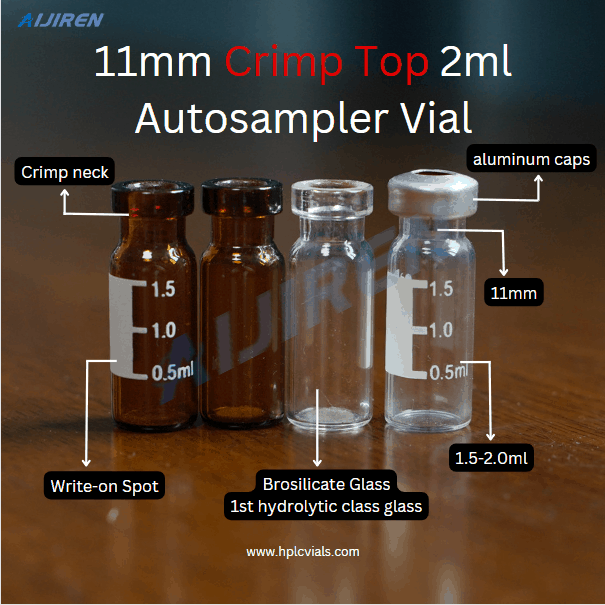Common faults and solutions of automatic samplers(2)
The main components of the autosampler are the injection needle, needle seat seal, injection valve and syringe. Common faults of automatic injectors include unstable baseline, increased ghost peaks, pump pressure suddenly drops to 0 or very small, poor injection reproducibility, clogged needle seat, mechanical failure of the injector, etc. Therefore, regular maintenance of the automatic sampler is an important guarantee for us to do a good job in liquid phase analysis. This blog follows the previous one and continues to talk about clogging of the needle seat and mechanical failure of the injector.
1. The baseline is unstable and ghost peaks increase.
2. The pump pressure suddenly drops to 0 or very small
3. Poor injection reproducibility
4. The needle seat is clogged
Many people have encountered the problem of needle seat clogging. Sometimes they accidentally use a hard plastic small vial cap or the injection pad on the vial cap is reused many times. When the injection needle needle is inserted, it will Suction the debris from the vial cap or vial pad into the needle hole. After the needle falls on the needle seat, the mobile phase flows through the needle seat through the 100ul quantitative loop, and the debris is brought to the needle seat inlet, causing the needle seat to become clogged and the system pressure to rise. Too high or the needle seat is leaking.
After discovering the problem on the clean workbench, enter the instrument diagnostic interface, lift the needle away from the needle seat, remove the front cover of the automatic sampler module, remove the screw connecting the needle seat to the six-way valve, and remove the needle seat with force. Connect the needle seat to the liquid phase pump, set the flow rate to 5ml/min and pressurize it. General blockages can be flushed out immediately. If it cannot be flushed out, you can put the needle seat into the ultrasonic machine for ultrasound, and then connect it again. Pump, or simply extend the pipeline, and connect the pump and ultrasound at the same time. Once I even used the pump and ultrasound while using the needle core of the gas phase manual syringe to poke the entrance of the needle seat to finally remove the blockage inside. Just take it out, put it back in and everything will be fine.
5. Mechanical failure
For problems with the robotic arm of the automatic sampler, carefully observe the movement of the robotic arm of the sampler when it is working, mainly including horizontal and vertical directions. These movements are completed by belts, gears and screws. Mechanical failure of the automatic sampler is mainly caused by dust in the air. Dust in the air is adsorbed on the belt, screw and gear, increasing friction. In severe cases, it directly leads to the failure to complete the scheduled action, and even automatically injects samples when the instrument is turned on. The instrument cannot pass the self-test. If this problem occurs, you can turn off the instrument and use a clean fiber-free non-woven cloth to wipe the screw, belt, gear and other transmission devices. If you cannot wipe the parts, you can pull the belt by hand. Then wipe it again. Experienced people can disassemble the instrument shell and wipe it.
Note: Never apply lubricating oil to the screw, because the lubricating oil itself will increase the adsorption of dust. After wiping, restart the instrument and give it a try. In many cases, the problem can be solved. As for problems such as inaccurate positioning of more complex robotic arms or the inability to grasp vials, it is best to have specialized engineers come to perform repairs.
Please note that there may be differences between different models and brands of autosamplers, so when troubleshooting, please refer to the appropriate user manual or contact the device manufacturer’s technical support department for an accurate solution for your specific device. Maintenance and troubleshooting of the automatic sampler are the accumulation of experience. The various components of high-performance liquid chromatography are interconnected. If one component has a problem, is contaminated, or is clogged, it may affect subsequent components. At the same time, check whether there are problems with the previous components. For example, if the baseline is unstable, check whether the detector is contaminated, whether there is any problem with the mobile phase, whether the injector is dirty, whether the chromatographic column is contaminated, whether the chromatographic column is not stable, whether the ambient temperature is stable, etc. So sometimes it is more difficult to find the problem than to repair the machine. This requires us to accumulate more experience, observe more, and use our brains more in our work. Only in this way can you become familiar with your machine and make better use of it.
Back to List
-
 下午4:09Weighing the Pros and Cons of PTFE/Silicone Septa
下午4:09Weighing the Pros and Cons of PTFE/Silicone Septa -
 下午4:05Decoding Vial Discard Guidelines: Ensuring Precision in Chromatography
下午4:05Decoding Vial Discard Guidelines: Ensuring Precision in Chromatography -
 下午5:01Navigating Micro Inserts for HPLC Vials: A Comprehensive Guide
下午5:01Navigating Micro Inserts for HPLC Vials: A Comprehensive Guide -
.jpg) 下午2:02Common faults and solutions of automatic samplers(2)
下午2:02Common faults and solutions of automatic samplers(2) -
 下午5:08Ensuring Sample Integrity: Navigating EPA Storage Vials Stability Guidelines
下午5:08Ensuring Sample Integrity: Navigating EPA Storage Vials Stability Guidelines

